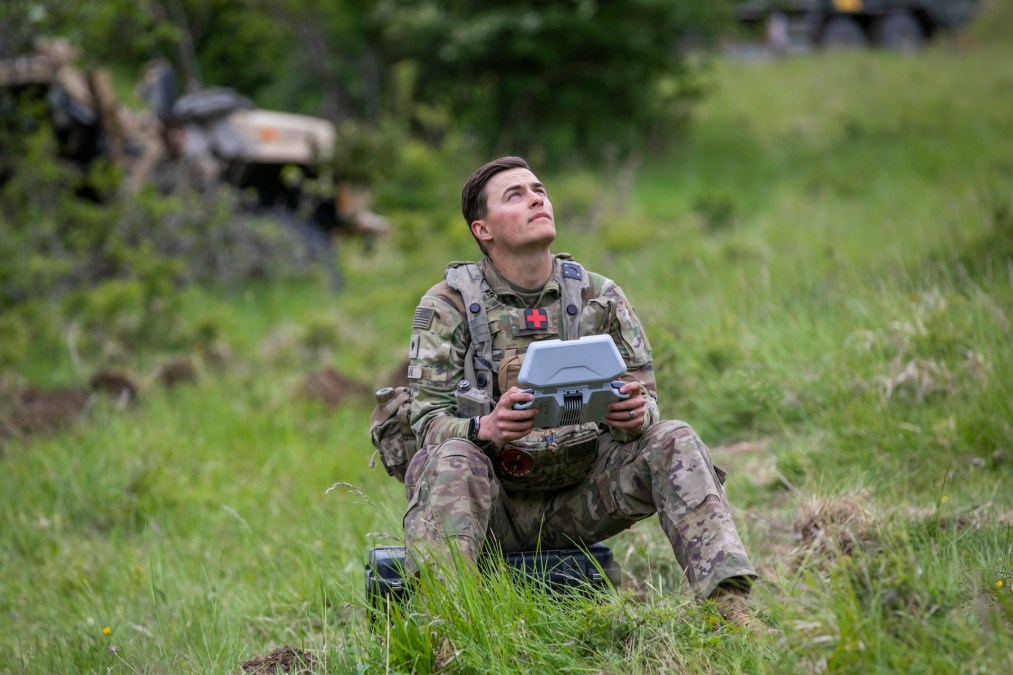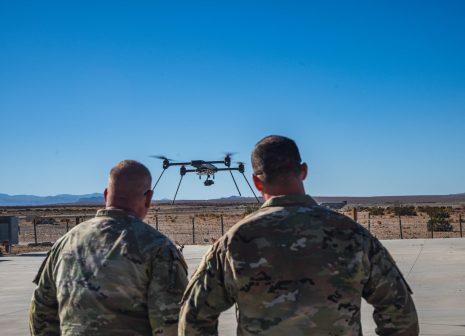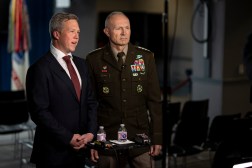U.S. Army is already taking lessons from Ukraine’s drone attack on Russia’s strategic bombers

Following Ukraine’s stunning attack over the weekend that used small drones to target and destroy Russia’s strategic bombing aircraft, the U.S. Army is applying big picture observations to its ongoing force transformation.
For starters, leaders believe it is a validation of some of the radical change the service is seeking in how to procure and manage capabilities differently in the future.
“Yesterday was a really good example of just how quickly technology is changing the battlefield. We’ve seen this over the last couple of years that everybody talks about [Program Objective Memorandum] cycles and everybody talks about program of record. I think that’s just old thinking,” Gen. Randy George, chief of staff of the Army, said Monday during the Exchange, an AI conference hosted by the Special Competitive Studies Project.
POM cycles refer to the five-year planning process for programs and capabilities in the Pentagon.
George noted that technology is changing too rapidly on the modern battlefield to be wedded to these large procurement programs that historically have taken years to develop and once fielded, can be largely obsolete.
He wants to shrink the timeline it takes to develop systems and get them in the hands of soldiers, especially given much of these capabilities, such as drones, communications gear and electronic warfare tools, are increasingly available on the commercial market.
“What we got to do is make sure that we’re aligned and that’s what we’re trying to do, changing the processes up here to make sure that we’re getting them the equipment, the war-winning capabilities that they know they need,” he said. “We’re going to have to be more agile. Drones are going to constantly change. We’re going to be trying to play the cat-and-mouse game with counter-UAS, so we’re going to have to work through that to make sure that we’re buying systems. We’re going to need a lot more agility in how we buy things.”
The Army has been experimenting with this approach through what it calls transforming-in-contact, which aims to speed up how the service buys technologies and designs its forces by injecting emerging capabilities into units and letting them experiment with them during exercises and deployments.
George said one of the Army’s units that just went to the Joint Readiness Training Center at Fort Johnson, Louisiana — which provides the most realistic combat scenarios the Army can create for units to train where forces simulate a battle campaign against an active enemy — had close to 400 drones in it. That is substantially higher than the number of drones other formations have had recently, with 3rd Brigade, 10th Mountain Division possessing over 200 during a January rotation in Europe, previously the most to date.
The Army doesn’t want to field the same systems like that for years because the technology changes so rapidly.
“We’re constantly updating those. I think that that’s how we have to be focused moving forward,” George said.
He also noted that Ukraine’s drone attack over the weekend flips the cost curve. Kyiv used relatively cheap systems to destroy millions to billions of dollars worth of Russian combat power.
“Look at how cheap those systems were compared to what they took out. We have to be thinking about that [with] everything we’re doing,” George said.
The attack, furthermore, exemplified how transparent battlefields are becoming, meaning there is nowhere to hide.
“We talk a lot about you can’t really hide anymore on the modern battlefield. You’re going to have to be dispersed, lower signature, all of those things, which we talk a lot about with our troops and with our commanders,” George said.
Moreover, the attack was videoed and viewed around the world hours later. The increasingly open-source nature of information about military activities around the world has implications for how the Army will operate in the future.
“We all knew about that within a matter of minutes. Everything was out there on open source,” George said.
The high-profile Ukrainian assault against Russian bombers came as the U.S. Army is in the midst of a major transformation effort. At the end of April, the service announced what it dubbed Army Transformation Initiative, where it seeks to shrink its headquarters elements, become leaner and change how it spends.
As part of that effort, Secretary Dan Driscoll said his service pitched itself to President Donald Trump and Pentagon leadership as the “innovation engine” for the Department of Defense by plucking the best ideas and technologies from the commercial sector and testing them out in the Army.
“We fundamentally believe the Army should be the innovation engine of the Pentagon … but we have to earn that right,” Driscoll said alongside George at Monday’s AI conference. “We basically said, hey, we will earn the right to do this by — we’ll cut ourselves. For ATI, the other thing … is it’s $3 billion dollars of cuts, and that’s a lot of money that people want to go to other programs. We’ve made the cuts, we’re recycling it to buy the things we want and need. We’re going to continue to run that engine and innovate.”






